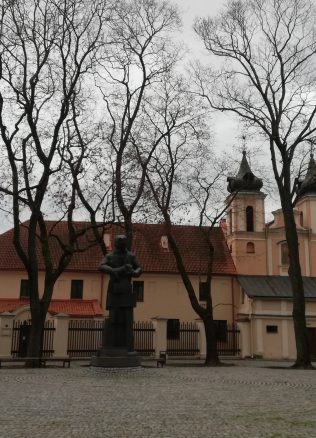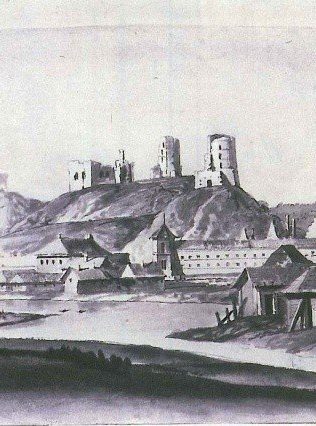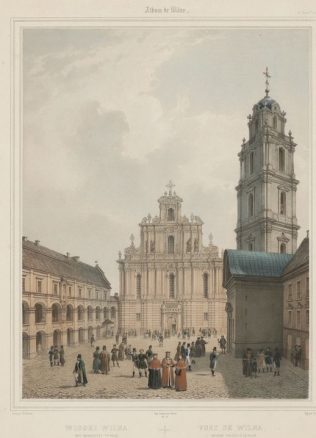Town Hall
The town hall is the most important center of the political, legal, cultural, and social life of the city. In 1387, King Jagiello granted self-governing Magdeburg rights to the city of Vilnius, which later the rights were expanded by Sigismund Kęstutaitis.
The oldest Town Hall in Vilnius was mentioned in 1432. It stood in the same place as it is now, as evidenced by the surviving Gothic cellars. The Gothic town hall was an elongated two-story building with a one-story annex on the west side. From the middle of the 15th century, a Gothic tower stood next to the town hall, which, like the town hall, was illuminated on public holidays, and musicians played until late at night.
In 1603, the Town Hall was reconstructed. It consisted of several buildings, forming an enclosed courtyard. In 1662, a clock and bell were installed into the Town Hall Tower. The town hall acquired its current classicist appearance after 1788-1799 reconstruction, led by architect Laurynas Gucevičius.
On 8 June 1749, the fire devastated the tower and the Town Hall. Just ten days later, the magistracy signed a contract with a German architect, Johann Christoph Glaubitz (ca. 1715–1767), charging him to rebuild the tower following the city-authorized project. The architect had to procure the materials and hire workers, while the magistracy supplied the copper plates for the spire.
The reconstruction ended in 1769, but eleven years later, in August 1780, the tower barely avoided repeated destruction, once the fire broke out in the neighboring Vokiečių [German] Street. The tower was left unscathed due to the suddenly calmed wind. Despite the happy ending, its days were numbered. Soon after the magistrate realized that the tower was about to collapse, architect Laurynas Gucevičius (1753–1798) suggested straightening the tower and reinforcing its understructure.
Learn more about the tower rescue operation by clicking this link.
Address: Didžioji St. 31


